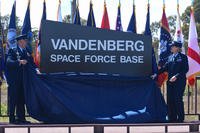WHITEMAN AIR FORCE BASE, Mo. -- The 442nd Fighter Wing is scheduled to begin integrating more than 100 active-duty Airmen by October.
The total-force integration of active-duty Airmen into Reserve units is part of an initiative to improve efficiency and combat capability by leveraging Reserve experience and continuity.
The 442nd FW is among three units in the Air Force Reserve Command, along with the 301st Fighter Wing at Naval Air Station Fort Worth Joint Reserve Base, Texas, and the 482nd Fighter Wing at Homestead Air Reserve Base, Fla., to have an active-duty association.
Col. Gregory Eckfeld, the 442nd FW vice commander, said the active-duty association will be mutually beneficial for the regular Air Force and the Reserve.
"There is a synergy with this setup: We get full-time manpower, which will help with our high operations tempo and deployments," Eckfeld said. "The active-duty Airmen get the benefit of our experienced reservists, who will help train and season their pilots and maintainers."
Eckfeld said the active-duty commander is scheduled to report here this summer and then approximately 40 of the Airmen will report a few months later. Like any other active-duty servicemember, the incoming Airmen will be eligible for base housing or dorms, dependent on rank, and all other medical and pay benefits.
The commander of the active-duty unit will take day-to-day operational direction from Brig. Gen. Eric S. Overturf, the 442nd FW commander. Administrative control and command authority will come from the 23rd Wing at Moody Air Force Base, Ga., where the 476th Fighter Group, a geographically separated unit of the 442nd FW, resides. The 509th Bomb Wing here will provide minor administrative support to the incoming active-duty Airmen.
Lt. Col. Stephen Chappel, the 442nd Operations Group commander, said integrating another unit will be challenging, but everyone involved is up to the task.
"A lot of smart people have already laid the groundwork for answering 90 percent of the questions," he said. "It's that remaining 10 percent of issues that become the challenge. With total-force integration, having the right people on both the active-duty and Reserve sides with a 'can do,' and more importantly, 'will do' attitude will allow the remaining 10 percent of the challenges to be easily overcome."























